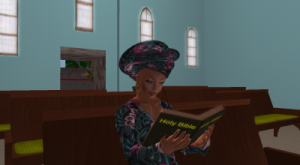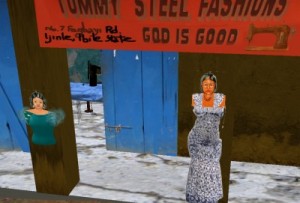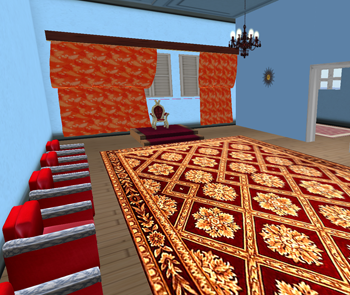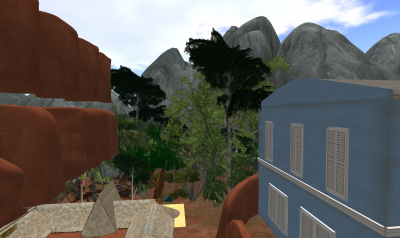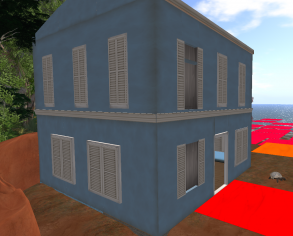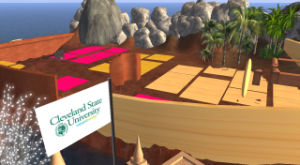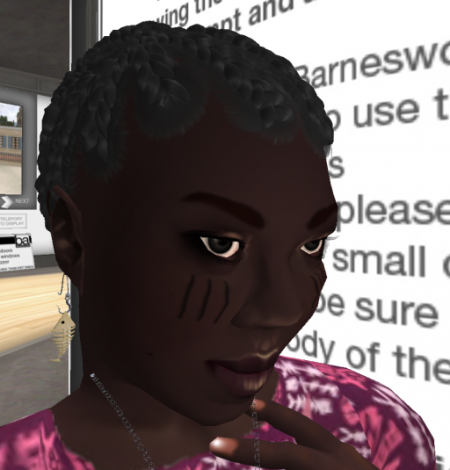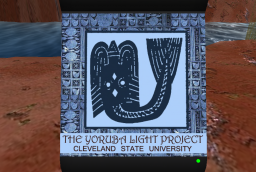Being too uncomfortable and fractious from my cold to grade exams, I threw myself into building this week. I wanted to really see some accomplishments! So, after shrinking the new palace and throwing up the build that emerged during the conference, I started to work. What next?
In fact, what content? What should a modern Yoruba town show, albeit truncated and in miniature? I want the mix of building styles to be clear–Afro-Brazilian intricacy, Yoruba concrete spinoffs of the same pleasing, old style buildings, something sleek and modern, paint deterioration–so, a mix of styles.
And what of content? I want to discuss religion, both as a major bulldozer of traditional patrons, but also as an interesting force within the country. I first lived in the Middle Belt, where Muslims and Christians (really perceived outsiders vs. indigenes, rather than religious rivals), and just last week several hundred were killed in clashes there. As I started building the cathedral, I realized the Yoruba aren’t usually involved in these clashes–perhaps because they are normally inter-ethnic problems, and the Yoruba are fairly evenly divided between Muslims and Christians. That’s quite a success story.
So, the church and mosque became my first two complex structure from scratch, the church a somewhat modern building, the mosque in full-blown Afro-Brazilian style. It has loads of little sculpty decorations and pastel details. Even the roof–corrugated sculpties, rather than a flat textured surface.
Placing things inside has been terrific fun, and shows just how skilled and in love with building many of SL’s creators are. My church pews are very reasonable, built by Duke Magneto. If you click on the back of a pew, you’re offered a candle or a Bible, and multiple poses are available to make you a very pious set of prims!
The mosque has poseballs I first saw in the fantastic Al-Andalus mosque build, back when it was the Chebi Mosque. They include the poses for salat and can be timed according to the various times of the day. The maker, Ruuh Cassini, also has a fantastic build that allows a virtual hadj (pilgrimage) to Mecca, as well as free copies of the Noble Koran–not just books with a cover, but USABLE full Korans–incredibly complex and time consuming!
I wanted both builds to include select YouTube videos of specifically Yoruba hymns, Yoruba Koranic recitations, and the were music played during Ramadan, and merrily gathered them. And then–yesterday YouTube changed something, and no SL YouTube viewer works. This has happened before, so I’m hoping the maker will develop a fix–it added so much!
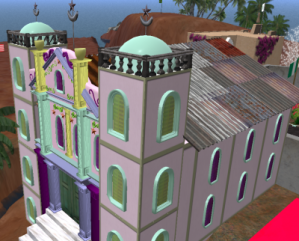
Skilled emancipated slaves from Brazil built plaster-detailed mosques, churches and houses in southwestern Nigeria and the Republic of Benin
The church also has bells, and I’m developing a specifically Yoruba call to prayer, which will make me explore sound further. Wonderful free sound scripts are available at Twisted Thorn’s ScreamShop on the second floor, courtesy of the wonderful soundstress Meriadne Merlin, who is incredibly kind. More on the sound adventures later.
I love sticking in the little details, like a few pairs of shoes in the mosque vestibule.
Today I put up the tailor shop, with treadle machines and some of Meriadne’s sounds. Finding some of the textures for posters, etc. was time consuming, but it makes it come alive for me, at least!
Now what other builds should modern Ijinle have? The conference building is going to be a library (each modern sector will have one, each with different contents). There will be outdoor hair braiding somewhere, and an assortment of signs. An Internet cafe? An art gallery? Certainly a wealthy family’s house or two, and a not-so-wealthy room and parlor. A tall office building is a possibility, but it might be disproportionate. A little beer parlor/buka restaurant. Some market stalls. What am I forgetting?


